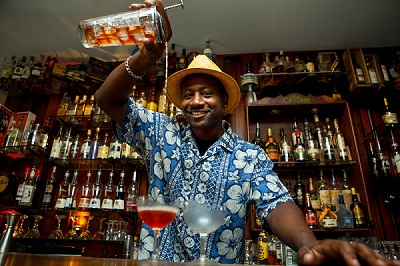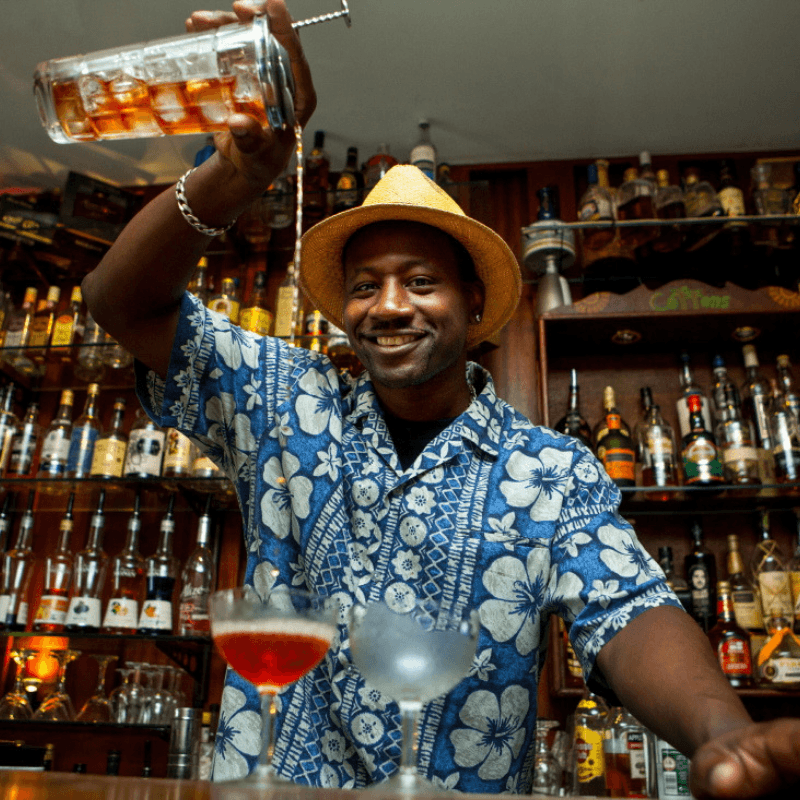Rum has been discovered, produced and perfected on sugar plantations in the Caribbean since the 17th Century. Over the years the demand for this by-product of sugar cane has grown world-wide.
Global exports of rum from CARIFORUM (a grouping of fifteen Caribbean countries) to Europe have increased by 26.86 % over the last three years to reach a value of $1.45 million Euros. Major importers are Spain and Germany, with Spain’s consumption making up 14 % of the spirits market.
To further improve and strengthen exports in Europe, representatives from CARIFORUM rum producing industries will converge in Frankfurt, Germany from September 26 to 28, 2019 for the 4th CARIFORUM EU Business Forum to build relationships and increase awareness in Europe.
The Business Forum is organized by the Caribbean Export Development Agency which has identified the agro-processed food and natural ingredient industries as well as the cultural and creative industries as sectors with the highest potential for growth in Europe.

Speaking to the development of this industry over the years, Manager for Competitiveness and Export Promotion at Caribbean Export, Damie Sinanan noted that over the last decade, the production of rum has diversified to include a wide range of flavours including apple, pineapple, mango and passion fruit. With these changing trends and increased demand, we hope to see a more diverse range of Caribbean rum available in the European market.
Did you know…
1. Not all rums are sweet
Most rums are made from molasses a byproduct of sugarcane through a process of fermentation and distillation, and after this process all that remains is alcohol. As a result, rum in its natural state is sugar free and the natural sweetness of rum comes from aging in mostly American oak wooden barrels. Some rum producers do add sugar to the distilled rum to sweeten and smoothen out the product, making it seem more thick and luxurious. However, you won’t find this in authentic rum producing countries like Barbados, Jamaica, and Martinique, which have regulations that prohibit adding sugar and other preservatives.
2. Pirates didn’t just drink rum
While rum was considered the drink of choice for pirates during the 1660s to 1730s when piracy flourished in the Caribbean, pirates didn’t just drink rum. Famous pirates like real life Captain Morgan (born 1635 in Wales and died 1688 in Jamaica), Edward Teach aka Blackbeard and others drank all types of alcohol and spirits like brandy, port, and Spanish wine. Most of the rum consumed during the 17th-century was drunk by people who lived in the Caribbean, not pirates.
3. Rhum is French for rum
Rhum with an H is not a spelling mistake but refers to French style rum that is made from freshly squeezed sugar cane juice rather than molasses. The official name is Rhum Agricole and this style of rum is traditionally made in former French Caribbean colonies such as Martinique which labels its rum AOC Martinique Rhum Agricole.
4. Ron is Spanish for rum
Just as the French have a different way of spelling rum, so do the Spanish. In fact, if you’re in a Spanish speaking country, then rum will be spelled Ron. Beyond the French and Spanish variation, there are also other names for rum. In fact, rum has many unofficial names including Aguadiente, Brebaje, Barbados Water, Clarin, Demon Water, Guildive, Killdevil, Nelson’s Blood, Red Eye, Pirates Drink, Navy Neaters, Guildive, and Tafia. As for the origin of the word rum itself, it is thought to be from an old English word called Rumbullion that was used to describe cane spirit in Barbados during the mid-1600’s and is meant as an uproar or tumult. Another linkage is to the word Rumbustious due to the effects of drinking rum.

5. Not all aged rums are dark
There are different types of rum including gold, dark, white, spiced, flavored and overproof. Aged rum tends to be dark, but there are also some aged white rums. Aged white rum is achieved by putting distilled rum in an oak barrel which is charcoal-filtered, and this takes away the dark color but still leaves the rum with the rich flavor of darker rums. The clarity and crispness of white rums make them a perfect choice to drink neat (by itself), or with ice and lime or in a full-blown rum cocktail. Beyond Cane Spirit Rothschild (CSR) and Brinley Gold Shipwreck, two white rums from St Kitts, an extremely popular aged white rum is Barcardi with origins in Cuba but now produced in Puerto Rico.
6. There are different ways to experience and savor rum
Rum is often paired with (diet) coke or fruits juices, but there are other ways of drinking this global spirit. For premium rums with complex flavors and aromas, its best to drink neat or with a splash of water or cube of ice. Premium rums also work well in classic cocktails such as Old fashions and Manhattans. A growing trend is to pair rum with different types of food including chocolate and marshmallows. Enjoying a glass of premium rum neat while smoking a cigar is also another favorite pastime. Note that when visiting a Caribbean bar or rum shop, you may hear straight or straight up instead of neat for a shot of rum.
7. Rum comes in all price ranges
Like all other spirits, prices for rum range from low to high with entry-level bottles of rum ranging from US$20 to US$60 but prices go much higher. For example, an Appleton Estate 50-year-old Independence Rum which was distilled in 1962 but bottled in 2012, sells for around US$5,000. This is not surprising as only 800 bottles of the Jamaican Appleton Estate 50-year-old Independence Rum was put into circulation. Even more costly is a Wray & Nephew 17-year-old Jamaican rum used in the original Mai Tai in 1944 which is valued at around US$52,000. Another highly prized and expensive rum was The Harewood Estate Rum uncovered circa 2011 which has the distinction of being the oldest rum in the world. Bottled initially in Barbados circa 1780, 24 bottles were auctioned by Christie’s in London in 2013 & 2014 for £250,000 (approx. US$332,000).
8. Not all rums marketed as rum are rum
With the increasing popularity and global demand for rums, it’s perhaps no surprise that there are now fake rum brands. Counterfeit rums are standard in Europe where no sugar cane is grown. For example, Tuzem a distilled drink from the Czech Republic has been marketed as rum, but it is made not from sugar cane or byproducts but potatoes or sugar beets. Other fake rums to watch out for are Rum Verschnitt from Germany and Inlander Rum from Austria. As such, stick to well-known rum brands and for the Caribbean choose those with the Authentic Caribbean Rum Marque label.
Take a look at the Caribbean rum producers that will be in Frankfurt, Germany from September 26 to 28, 2019 for the 4th CARIFORUM EU Business Forum.

